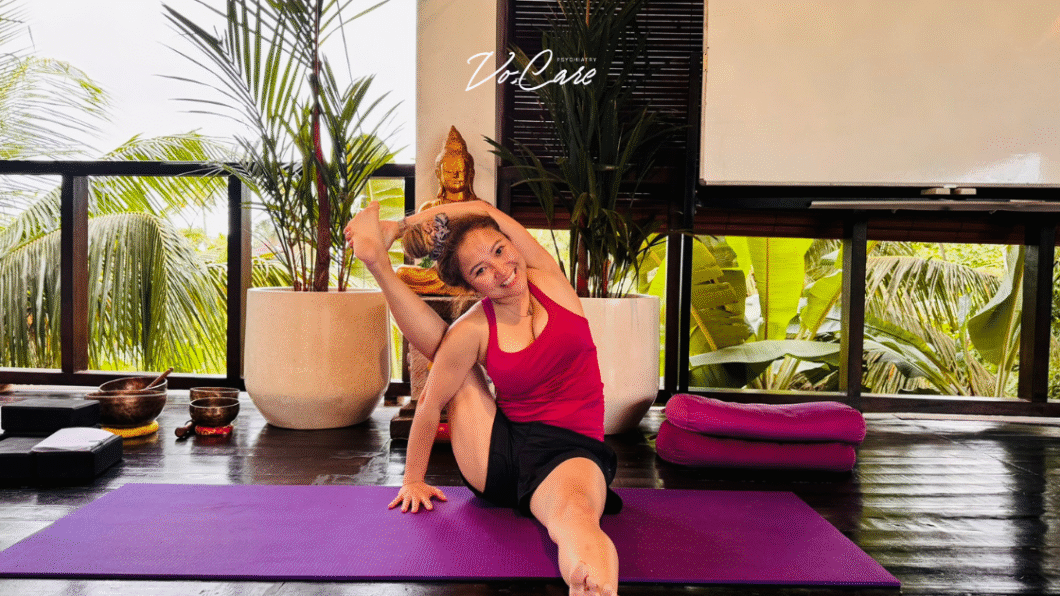TL;DR — Flow vs Force in Habit Building
Design beats discipline everytime. Map your energy, shrink to a minimum viable habit, stack it to a solid cue, shape the environment, add a 60-second reset, and review weekly. That’s flow over force—and how you build habits without willpower.
Most of us try to change by pushing harder—more rules, more discipline, more motivation. It works for a week, then real life shows up and the habit slips. “Try harder” is a brittle strategy because it depends on a state that fluctuates hour to hour. A more durable approach is flow over force: design your habits to match your energy, context, and season of life, so follow-through becomes the easy answer. When you do that, you quite literally build habits without willpower. The system carries you.
What “Flow Over Force” Actually Means
Force treats behavior like a test of character. You set a big target, promise yourself you’ll power through, and then spend precious energy negotiating with yourself. Flow treats behavior like design. You right-size the action, place it in the right window of the day, and reduce the steps between you and starting. The habit becomes a path of least resistance. You are not “trying to be disciplined” all the time; you are making the next step small, obvious, and well-timed.
This isn’t about taking it easy. It’s about choosing conditions that make success probable. Think fewer heroic efforts, more consistent starts.
Why Forcing Habits Fails (and Why That’s Not Your Fault)
On stressful days, your brain favors quick rewards and simple choices. If a habit requires significant setup, exact timing, or high effort, your mind will postpone it—especially when you’re tired. The more you push, the more stress you create, and the less likely tomorrow’s attempt becomes. It’s not a character flaw; it’s how attention and energy work. The solution is not to summon more willpower, but to change the design of the habit so it fits the day you actually have.
Step 1: Map Your Energy Before You Move the Habit
For three ordinary days, notice when you naturally think clearly and when your energy dips. Most people have one or two “high-focus” windows and at least one low point. Put the habit you keep avoiding into your best window. If your sharpest hour is 8–9 a.m., that’s where focused work, studying, or planning goes. If your clearest time is late evening, schedule the habit there and protect it like an appointment. Reserve low-energy blocks for lighter tasks—reviewing notes, tidying, packing lunches. This simple swap turns friction into flow because your effort now matches your capacity.
Result: you begin to build habits without willpower because you’ve stopped asking your brain to do hard things at the wrong time.
Step 2: Redefine Success as the Minimum Viable Habit
The habit must be small enough to finish on your worst day. Read one page, write one sentence, stretch for two minutes, walk to the corner and back. That’s the minimum viable habit—a version that protects the identity of “I’m someone who shows up,” even when life is messy. You can always do more once you start. But you never do zero.
This reframing matters. Small completions deliver quick wins that keep motivation alive. Momentum grows because you finished, not because you suffered.
Step 3: Attach the Habit to a Cue You Already Do
Habits stick when they have a reliable trigger. Choose something you already do every day and let it pull the new behavior along.
-
After you start the kettle, open your planner.
-
After you brush your teeth, do a two-minute stretch.
-
After you open your laptop, write one sentence in the draft.
Attaching a new action to an automatic cue means the decision happens once, up front. Tomorrow, the cue does the reminding, not your willpower.
Step 4: Shape the Environment to Do the Heavy Lifting
Design the space so the first step is obvious and immediate. Lay out shoes by the bed. Place the yoga mat where you’ll step on it. Open the study tab before you sleep. Put a glass of water next to the coffee maker. At the same time, add friction to the competing behavior: move social apps into a folder, log out of streaming on weeknights, charge the phone across the room. The point isn’t to control yourself—it’s to make the helpful choice one step closer and the distraction one step farther.
Step 5: Start with a 60-Second Micro-Reset
Before you begin, downshift your nervous system so starting feels safe and doable. Inhale for four counts, hold for two, exhale for six—repeat three times. Roll your shoulders. Unclench your jaw. Then say, “One small step is enough.” You are pairing the habit with a calm state. That pairing makes it easier to start again tomorrow, which is how you build habits without willpower over time: you reduce the emotional load attached to beginning.
Reflect over regret – Shame doesn’t improve performance; feedback does. Once a week, take two minutes to review:
-
Keep: What worked that you want to keep?
-
Remove: What got in the way that you can trim or move?
-
Reduce: What’s the new minimum if next week is chaotic?
You are iterating in public with yourself, not judging in private. This small loop keeps the habit alive as life changes.
Two Short Case Studies (How Flow Beats Force)
Working parent, morning chaos. She kept trying to run for 30 minutes at 6 a.m. and failed three days out of five. We moved movement into her best energy window—lunchtime—shrunk the target to a 10-minute walk, and placed shoes and a water bottle by the door the night before. She stacked the walk after heating lunch and added a 60-second breath reset before stepping out. Within two weeks, she was walking four to five days a week and often chose to go longer because starting felt easy.
Student, evening study slump. He forced 90-minute study blocks after dinner, then scrolled to avoid it. We shifted focused study to his clearest hour (4–5 p.m.), cut the block to 20 minutes, and made the cue “after I open my laptop for class, I open the study tab.” Phone went on the dresser, not the desk. He ended most sessions wanting to continue—proof that starting small produces more total work than forcing a perfect plan.
Common Pitfalls—and Flow-First Fixes
-
Too big, too soon. If you miss two days in a row, halve the habit. The streak matters more than the volume.
-
Vague timing. “Sometime tomorrow” means never. Anchor to a real cue in a real window.
-
Invisible progress. Put a checkmark on a wall calendar or tap a habit app. Seeing completion increases follow-through.
-
All-or-nothing thinking. On messy days, do the never-zero version. One minute counts because identity compounds.
Gentle Matters (A Mental Health Note)
If you’re navigating persistent sadness, anxiety, or burnout, shrinking the habit is wise—not quitting. Flow over force respects your nervous system. If symptoms feel heavy or constant, professional support can help you find steadier ground while you keep a tiny version of the habit alive. Progress remains possible when the plan is humane.
Try It Tonight (Two Minutes)
Write the minimum version of one habit you keep forcing. Choose the cue you’ll attach it to tomorrow. Set one environment nudge before bed—shoes out, notebook open, water poured. In the morning, start with three slow breaths and take the first small step. That is how you build habits without willpower: one well-designed beginning at a time.
Keep Going with YouHabits
If “flow over force” resonates, YouHabits turns it into a simple weekly system—tiny wins, energy-aligned planning, and a quick reflection practice that grows with your life.

Special Announcement

Big news: Dr. Krysti Vo is now a Yoga Union–certified yoga teacher—aligning with our Flow Over Force approach. She’ll begin integrating breath-led movement into care for patients and YouHabits students. We’re planning classes and want your input: Would you join a live online class with Dr. Vo for a low fee (no course required), prefer an in-person class for a low fee, or try a complimentary session first? Comment your preference below.

